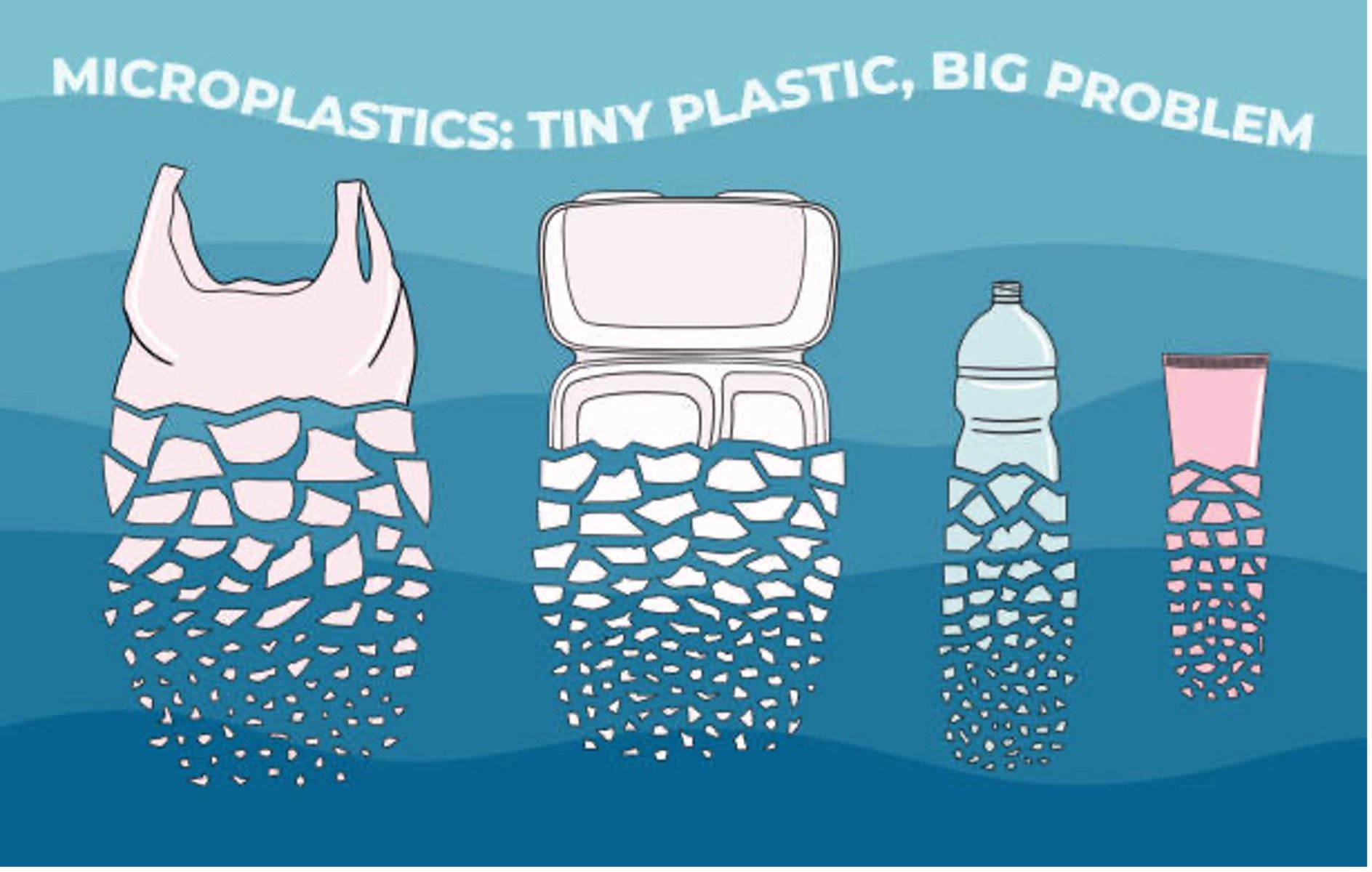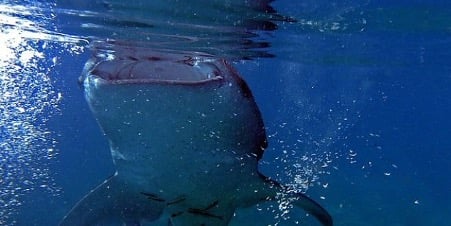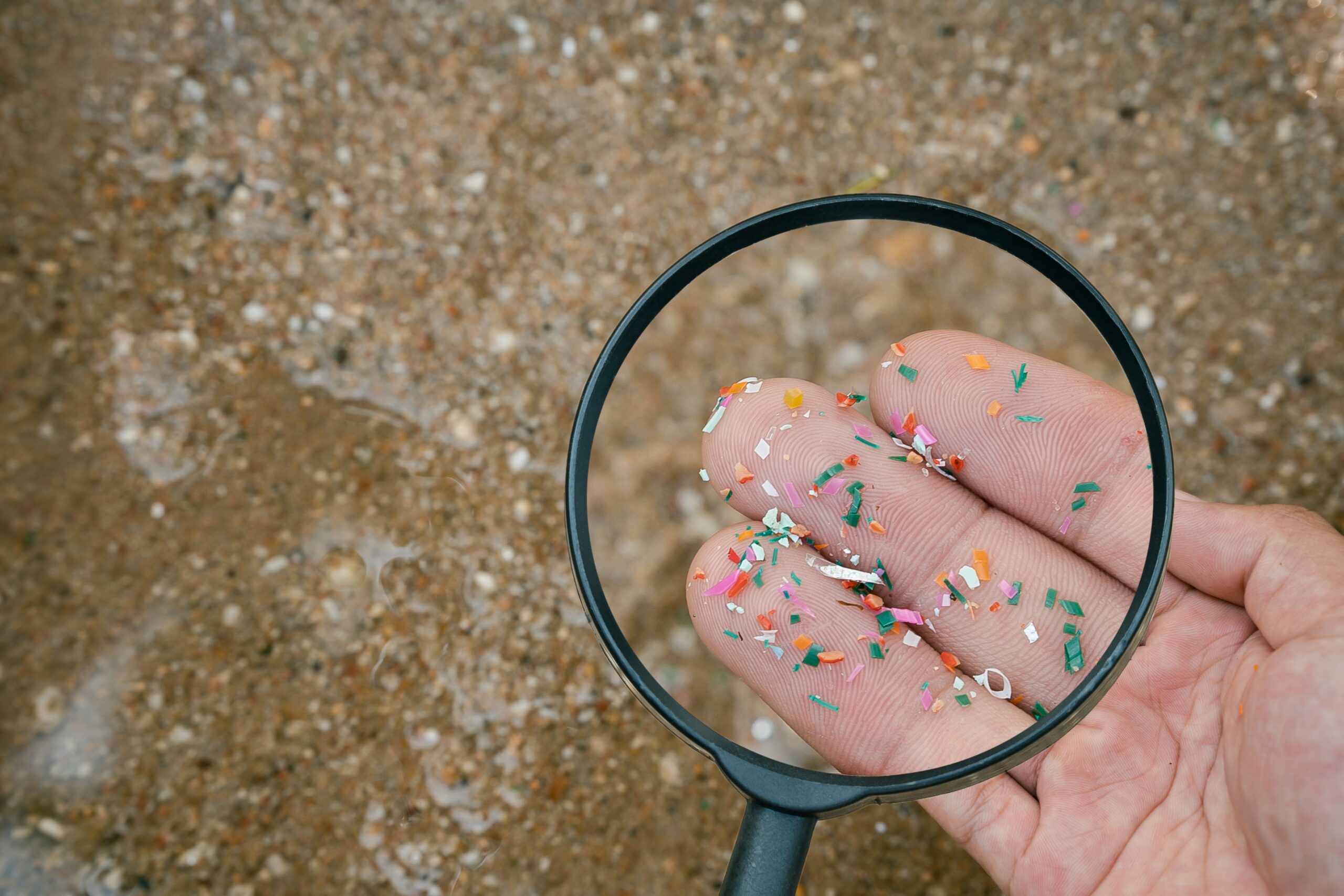Microplastics pollution and sharks: how are sharks affected?
Aside from oil spills, algae bloom, and chemical contaminants that are known to pollute our ocean, a persistent type of pollutant that has gained significant global attraction since the late 20th century is microplastics. What exactly are microplastics? Microplastics are tiny fragments of plastic that are less than five millimetres in size. They are formed (1) by the weathering (breaking down) of larger plastics, (2) intentionally created as raw materials for other plastic products or (3) used in other products, for example in the production of cosmetics microbeads which are used in facial scrubs, personal care products and much more. So, how do they get into the ocean and contribute to pollution, and what impact do they have on sharks in our oceans?
Microplastics can be found everywhere in our environment — from personal care products and synthetic clothing to degraded plastic bags and bottles. They are very lightweight and can be dispersed easily by wind, water, and humans. These tiny materials find their way into the ocean through various pathways — river and stream runoff, beach littering, atmospheric deposition, fishing and aquaculture activities, wastewater treatment plants, and the weathering of plastics that are already there.

Formation of microplastics from larger plastics. Photo © Institute for Organic Synthesis and Photoreactivity
In the ocean, microplastics pose a huge threat to aquatic animals. Several ways in which microplastics affect aquatic lives include the disruption of aquatic processes (such as plastic accumulation in the digestive and gastrointestinal tracts, interfering with normal absorption and digestion), habitat alteration (e.g. microplastics settling on the seafloor and modifying the physical and chemical properties of the sediment, thereby impacting the abundance and diversity of benthic organisms), physical abrasion (microplastics coming in direct contact with the surfaces of fish, crustaceans, or mollusks and abrading their skin, scales, or protective coatings, leading to injuries to the animals and making them more vulnerable to infections or other environmental stressors) etc. Studies have shown that microplastics can have a detrimental impact on the health, behaviour, and overall well-being of marine organisms, contributing to the global decline in fish populations, with an estimated death of 100,000 annually due to plastic pollution (Tekman et al., 2022).
Many shark species, some of which are apex predators at the top of the marine food chain are particularly vulnerable to the risk posed by microplastics. Sharks generally have a long lifespan (about 20–100 years), they reproduce slowly and don’t give birth to lots of pups, and they exhibit slow growth rates which allows them to accumulate microplastics in their body for a very long time. They are one of the species found to have the highest quantity of microplastics (Munno et al., 2023).
How do sharks ingest microplastic?
Sharks accumulate microplastics in their body through two primary pathways: (1) direct ingestion and (2) indirect ingestion. Direct ingestion occurs when shark species that filter feed consume microplastics directly from polluted water. They do not intend to feed on these plastics but because microplastics look like plankton, algae etc., they mistakenly feed on them because they find it hard to distinguish. For example, a study found that whale sharks, which is a filter feeder, could mistakenly swallow hundreds of microplastics in just an hour. Indirect ingestion occurs when sharks consume other fish that have microplastics in them. Since some shark species are on top of the food chain they tend to feed on almost all other fish in the ocean. Hence, they indirectly consume microplastics by eating these fish. Not all sharks are pelagic (i.e. inhabiting the open ocean) some are demersal (i.e. dwelling very close to the ocean floor). Demersal sharks may also ingest microplastics directly from the sediment from the seafloor.

Whale shark ingesting microplastics alongside its natural food. Photo © Oceansentry
How do microplastics affect sharks?
Microplastics could potentially have far-reaching consequences for sharks. The impact of microplastics on sharks may include:
1. Intestinal damage: The sharp edges of microplastics can cause physical damage to the digestive tracts and other internal tissues in sharks, potentially leading to internal injuries complications and death in case of long-term exposure.
2. Increased toxin levels: microplastics act as vectors of toxins because they adsorb toxic additives and chemicals and release them into the shark’s body. These may lead to toxicological effects such as a decrease in fitness and overall sharks’ health.
3. Starvation: When sharks mistakenly fill their stomach with microplastics, they may experience a false sense of fullness, leading to reduced consumption of actual food. This can result in malnutrition over time as the ingested microplastics offer no nutritional value, thereby causing starvation and in the long term might lead to death.
4. Endocrine disruption: Microplastics may contain chemical additives that, when absorbed by the shark’s body, can act as endocrine disruptors. Endocrine-disrupting chemicals can interfere with hormonal balance and signaling systems, potentially influencing the shark’s behaviour.
5. Altered migration patterns: Behavioural changes induced by the presence of microplastics might extend to alterations in migration patterns. Sharks often follow migratory routes in search of food, and any disruption in their sensory or navigational abilities due to the presence of microplastics could lead to deviations from typical migration paths.
6. Interference with immune system’s responses: Microplastics can cause tissue damage, and oxidative stress and bring about changes in immune-related gene expression as well as sharks’ antioxidant status.
7. Reduced reproduction: Microplastics endocrine-disrupting effects on sharks may interfere with their reproductive processes. This could lead to reduced reproductive success, impacting the population dynamics of shark species, and contributing to global pollution declines.
Climate change might amplify the impact of microplastics on sharks. Climate change causes a rise in sea temperatures and changes ocean currents thereby affecting the distribution and abundance of prey species that sharks rely on. This may lead sharks to search for food in different areas, potentially increasing their exposure to microplastics. Additionally, climate-related events, such as extreme weather conditions and storm surges, could enhance the plastic weathering process; thus, releasing a greater quantity of microplastics into the marine environment, making it more likely for sharks to encounter and ingest these particles during their normal feeding activities. Ocean acidification and microplastics could also alter the morphology of fish larvae and distort growth (Huang et al., 2022; Kakar et al., 2023).

Microplastics found a long the shoreline. Photo © Deemerwha studio | Shutterstock
Microplastics, coupled with other threats facing the global shark populations, are gradually pushing these populations closer to extinction. Therefore, understanding these potential consequences is critical for developing effective conservation strategies aimed at mitigating the impact of microplastics on shark populations. As some shark species are apex predators, sharks play a crucial role in maintaining the balance of marine ecosystems, and any threats to their health can have broader implications for the entire oceanic food web. Demersal shark species such as smooth hound, soup fin, and spotted gully also play a role in shaping the structure of benthic habitats. Their foraging behaviour can influence the distribution of prey species, which in turn affects the composition and health of benthic communities. Therefore, it is essential to take significant steps and put in place measures to reduce plastic pollution in our environment and protect these ecologically important species. One way to reduce plastic pollution is by engaging in a beach cleanup in your area or engaging in one with organisations like Shark Spotters that focus on ocean health and shark conservation. We all can help sharks against microplastic pollution.
